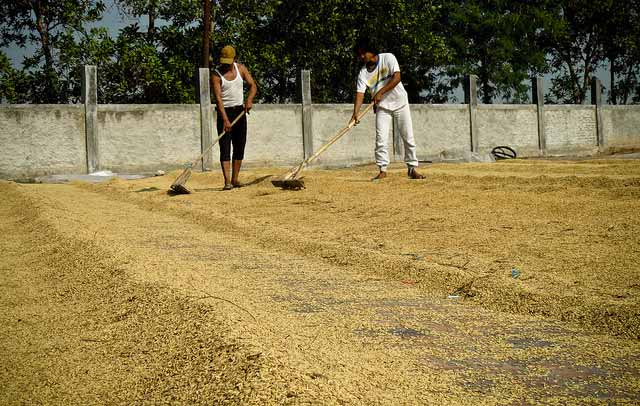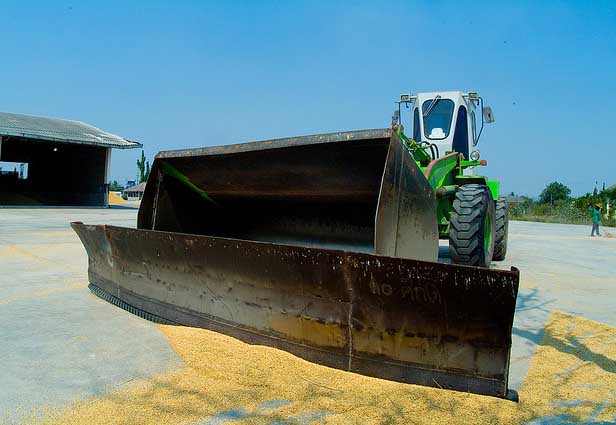Sun drying
 Sun drying is a traditional drying method for reducing the moisture content of paddy by spreading the grains under the sun. The solar radiation heats up the grains as well as the surrounding air and thus increases the rate of water evaporating from the grains.
Sun drying is a traditional drying method for reducing the moisture content of paddy by spreading the grains under the sun. The solar radiation heats up the grains as well as the surrounding air and thus increases the rate of water evaporating from the grains.
It is the most common drying method in Asia because of its low cost compared to mechanical drying. It requires little investment and is environmentally friendly since it uses the sun as the heat source and therefore produces no CO2.
However, sun drying tends to be labor-intensive and has limited capacity. Temperature control is also difficult in this method and grains can easily be overheat causing cracked grains which leads to low milling quality. It is also not possible to sun dry at night or during rain.
Options for sun drying
The following are recommended options for sun drying:
- Mat drying
The paddy are placed on mats, nets, or plastic sheets (canvas) to dry. It is the most hygienic sun drying practice because grains become less contanimated with stones and other dirt. It also allows easy collection in case of rainfall. However, there is danger of re-wetting from soil moisture.  Pavement drying
Pavement drying
Farmers, grain collectors, traders, and millers use drying pavements, which are usually specifically constructed for drying. This method can dry a high capacity of grains and can be partially mechanized by using wheel tractors.
How to improve sun drying
If sun drying is managed properly, it can produce high-quality grain. To improve sun drying:
- Spread the grains in thin layers of ideally 2–4 cm.
Very thin layers tend to heat up very quickly with a negative effect on head rice recovery. If layers are too thick, a large moisture gradient develops with dry grains on the top and wet grains on the bottom, which re-absorbs moisture after mixing, resulting in cracked grains. - Turn or stir the grain every 30 minutes.
During good weather conditions, mixing or turning the grain is the most important activity for maintaining good quality. Variation in moisture content within the grain causes rewetting and subsequent cracking of drier grains.
Additional measures to maintain optimum quality during sun drying
- On hot days, grain temperature can rise above 50–60ºC. If this is the case, cover the grain at mid-day to prevent over heating.
- Cover the grain immediately if it starts raining. Rewetting of grain results in fissured grains and high grain breakage during milling.
- Prevent contamination of grain with other materials and keep animals off the grain.
- Monitor grain moisture content and grain temperature.